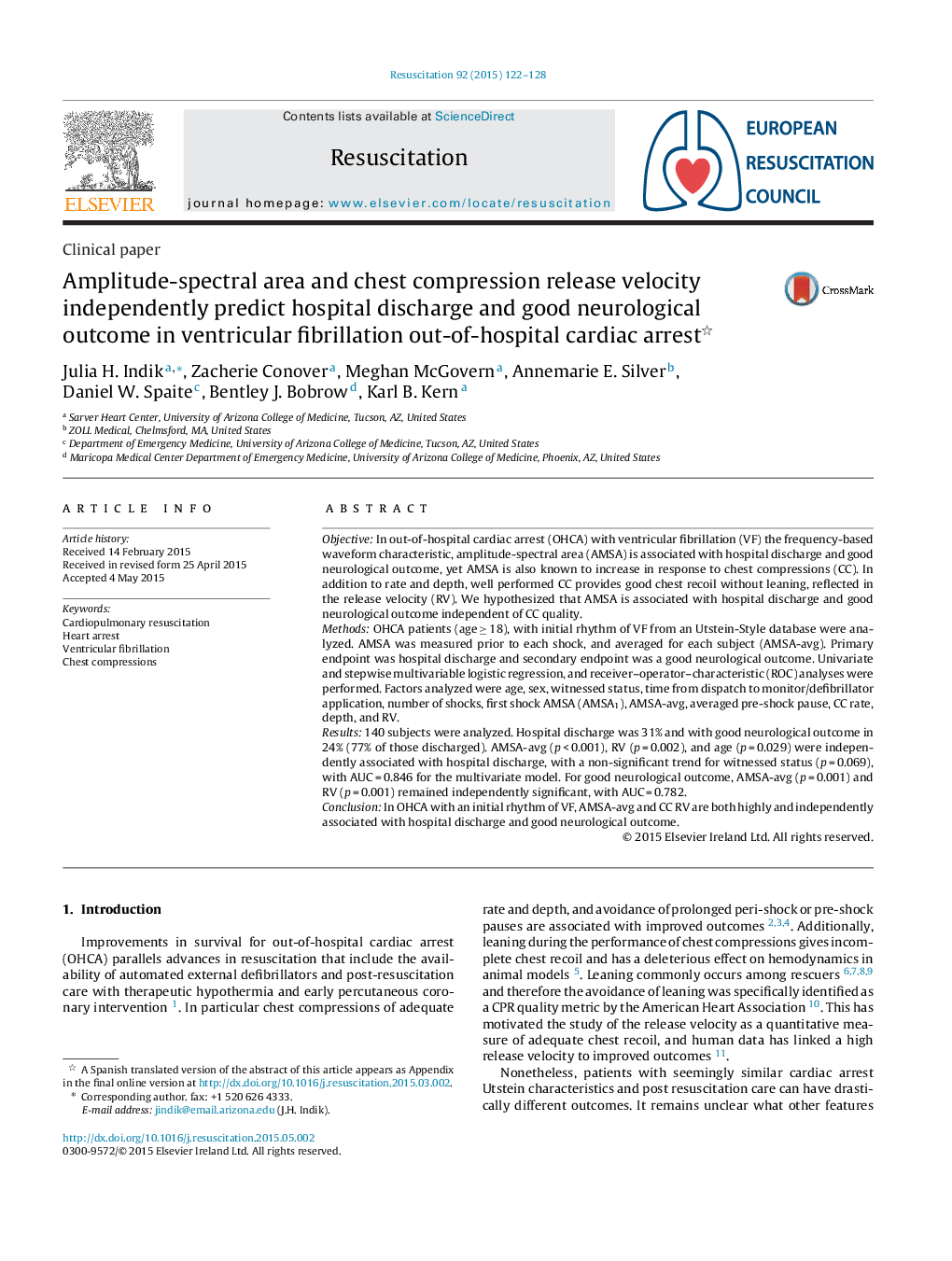| Article ID | Journal | Published Year | Pages | File Type |
|---|---|---|---|---|
| 5997823 | Resuscitation | 2015 | 7 Pages |
ObjectiveIn out-of-hospital cardiac arrest (OHCA) with ventricular fibrillation (VF) the frequency-based waveform characteristic, amplitude-spectral area (AMSA) is associated with hospital discharge and good neurological outcome, yet AMSA is also known to increase in response to chest compressions (CC). In addition to rate and depth, well performed CC provides good chest recoil without leaning, reflected in the release velocity (RV). We hypothesized that AMSA is associated with hospital discharge and good neurological outcome independent of CC quality.MethodsOHCA patients (age â¥Â 18), with initial rhythm of VF from an Utstein-Style database were analyzed. AMSA was measured prior to each shock, and averaged for each subject (AMSA-avg). Primary endpoint was hospital discharge and secondary endpoint was a good neurological outcome. Univariate and stepwise multivariable logistic regression, and receiver-operator-characteristic (ROC) analyses were performed. Factors analyzed were age, sex, witnessed status, time from dispatch to monitor/defibrillator application, number of shocks, first shock AMSA (AMSA1), AMSA-avg, averaged pre-shock pause, CC rate, depth, and RV.Results140 subjects were analyzed. Hospital discharge was 31% and with good neurological outcome in 24% (77% of those discharged). AMSA-avg (p < 0.001), RV (p = 0.002), and age (p = 0.029) were independently associated with hospital discharge, with a non-significant trend for witnessed status (p = 0.069), with AUC = 0.846 for the multivariate model. For good neurological outcome, AMSA-avg (p = 0.001) and RV (p = 0.001) remained independently significant, with AUC = 0.782.ConclusionIn OHCA with an initial rhythm of VF, AMSA-avg and CC RV are both highly and independently associated with hospital discharge and good neurological outcome.
